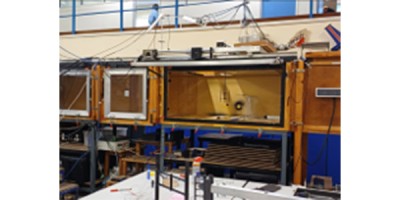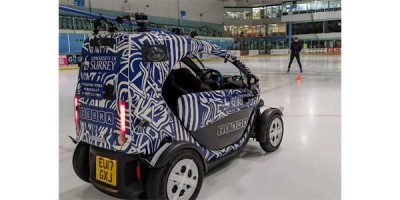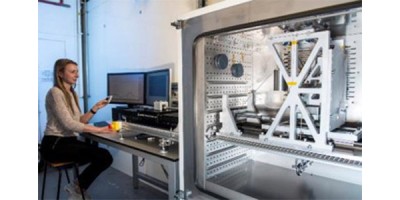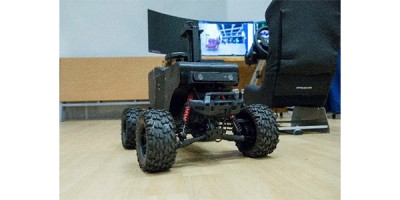
Facilities
The research centre offers a comprehensive range of advanced facilities supporting aerodynamic, automotive, and environmental studies. It includes multiple wind tunnels for diverse testing needs, from large-scale aerodynamic validation to small-scale educational projects. Cutting-edge platforms enable research in autonomous and electric mobility, complemented by hardware-in-the-loop systems for real-time control and powertrain validation. Specialised rigs support tyre friction analysis and engine performance studies under controlled conditions. Autonomous vehicle development is enhanced through dedicated testbeds and simulators that bridge virtual and physical environments. These resources collectively provide an integrated environment for innovation in sustainable transport, intelligent systems, and future mobility solutions.
Aero tunnel

Versatile aero tunnel for general aerodynamic and automotive testing. Features a rolling road, 100 kW power, and wind speeds up to 40 m/s—ideal for research and performance validation.
Responsible academic: Matteo Carpentieri
EnFlo tunnel

Nationally recognised environmental flow tunnel that simulates Earth’s atmospheric conditions for advanced environmental and fluid dynamics research. Delivers up to 1 MW power and wind speeds of 5 m/s for precision studies.
Responsible academic: Matteo Carpentieri
A tunnel

Compact and accessible wind tunnel for small-scale aerodynamic projects. Offers wind speeds up to 15 m/s and 10 kW power—ideal for flexible, low-power experimental setups and educational use.
Responsible academic: Matteo Carpentieri
ZEBRA: Zero Emission test Bed for Research on Autonomous driving

Autonomous EV platform equipped with 8 cameras, LiDAR, dSPACE microcontrollers, and integrated vehicle dynamics sensors—supporting advanced control development, real-time testing, and validation of autonomous and electric mobility systems.
Responsible academics: Davide Tavernini, Patrick Gruber, Umberto Montanaro
Steer-by-wire Hardware-in-the-Loop test rig

Hardware-in-the-loop steer-by-wire rig with Vector microcontrollers and vehicle dynamics simulation software—enabling precise testing and validation of advanced by-wire steering systems in real-time in vehicle-representative environments.
Responsible academics: Patrick Gruber, Davide Tavernini
Rubber friction rig

Tyre friction test rig designed for low-speed and different temperature testing—enabling detailed analysis of grip performance and material behaviour under controlled environmental conditions for safety and efficiency research.
Responsible academic: Patrick Gruber
Powertrain Hardware-in-the-Looptest test rig

Advanced HIL testbed featuring three dynamometers, a battery emulator, and real-time vehicle modeling—enabling precise validation of electric and hybrid powertrains under dynamic, hardware-integrated conditions.
Responsible academics: Patrick Gruber, Davide Tavernini, Umberto Montanaro
Internal-combustion-engine dyno

Internal combustion engine dynamometer for detailed engine characterization and emission analysis—supporting research into performance, efficiency, and regulatory compliance under controlled operating conditions.
Responsible academic: Guohong Tian
Qcars

Small-scale autonomous cars equipped with LiDAR, cameras, and vehicle dynamics sensors—operating in a controlled road environment for testing control and navigation algorithms for connected vehicles in realistic scenarios.
Responsible academic: Umberto Montanaro
Connected Autonomous Agility Car

Connected Autonomous Agility Car is a research platform enabling real-time testing of safe AI, perception, and decision-making, bridging simulation and full-scale autonomy with advanced sensors, control systems, and rugged mobility.
Responsible academic: Saber Fallah
Flight simulator

Multi-configurable simulator with fibreglass cockpit, VR headset, and Honeycomb flight console, enabling immersive driving and flight experiences with high-fidelity visuals, ergonomic controls, and seamless software integration for research and training.
Responsible academic: Marco Placidi
Driving simulator

The 6DoF simulator replicates complex vehicle dynamics, enabling research into autonomous control, driver behaviour, and HMI. It bridges simulation and reality to advance intelligent systems and sustainable mobility solutions.
Responsible academic: Ian He
Truck driving simulator for vehicle control assessment
Driver-in-the-Loop Simulator uses IPG TruckMaker with steering and pedals to simulate realistic driving, test HMIs and control algorithms, and explore vehicle setups and environments safely in a controlled setting.
Responsible academic: Ahu Ece Hartavi Karci